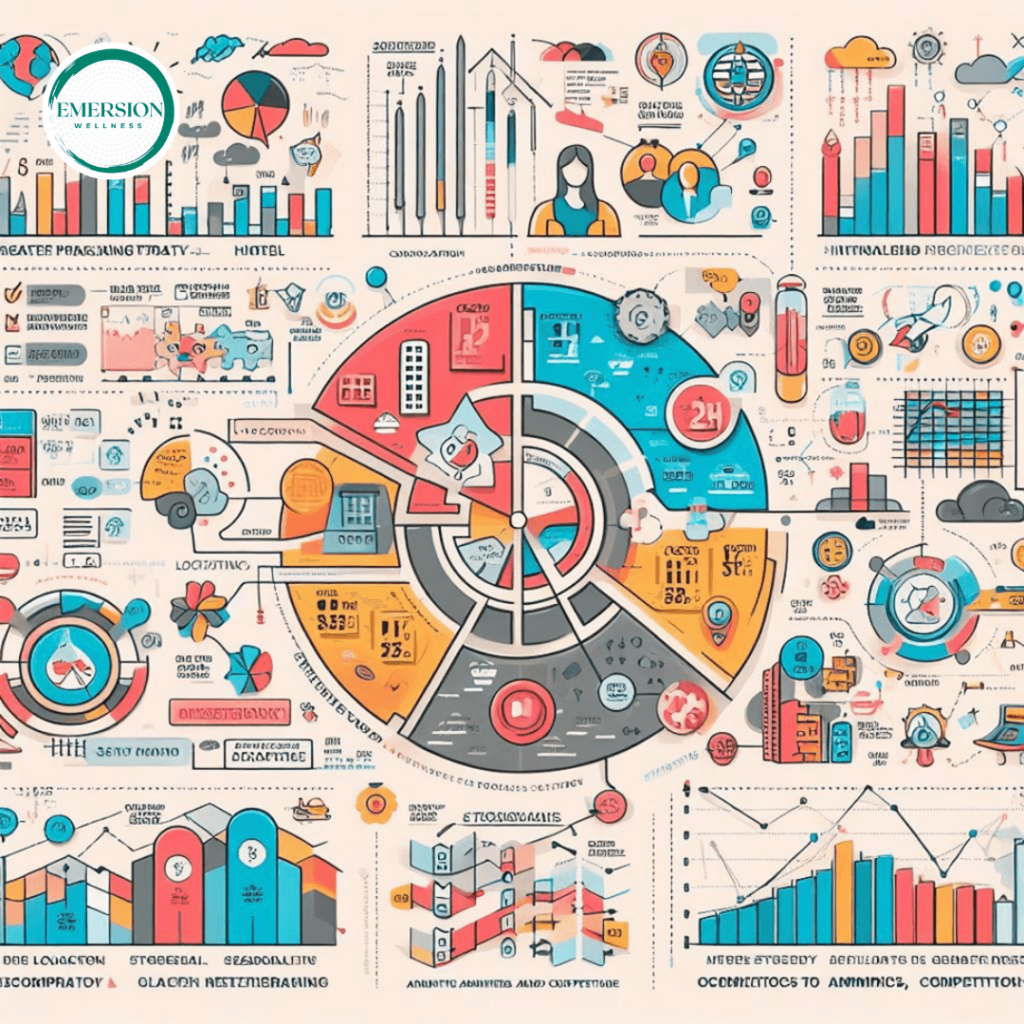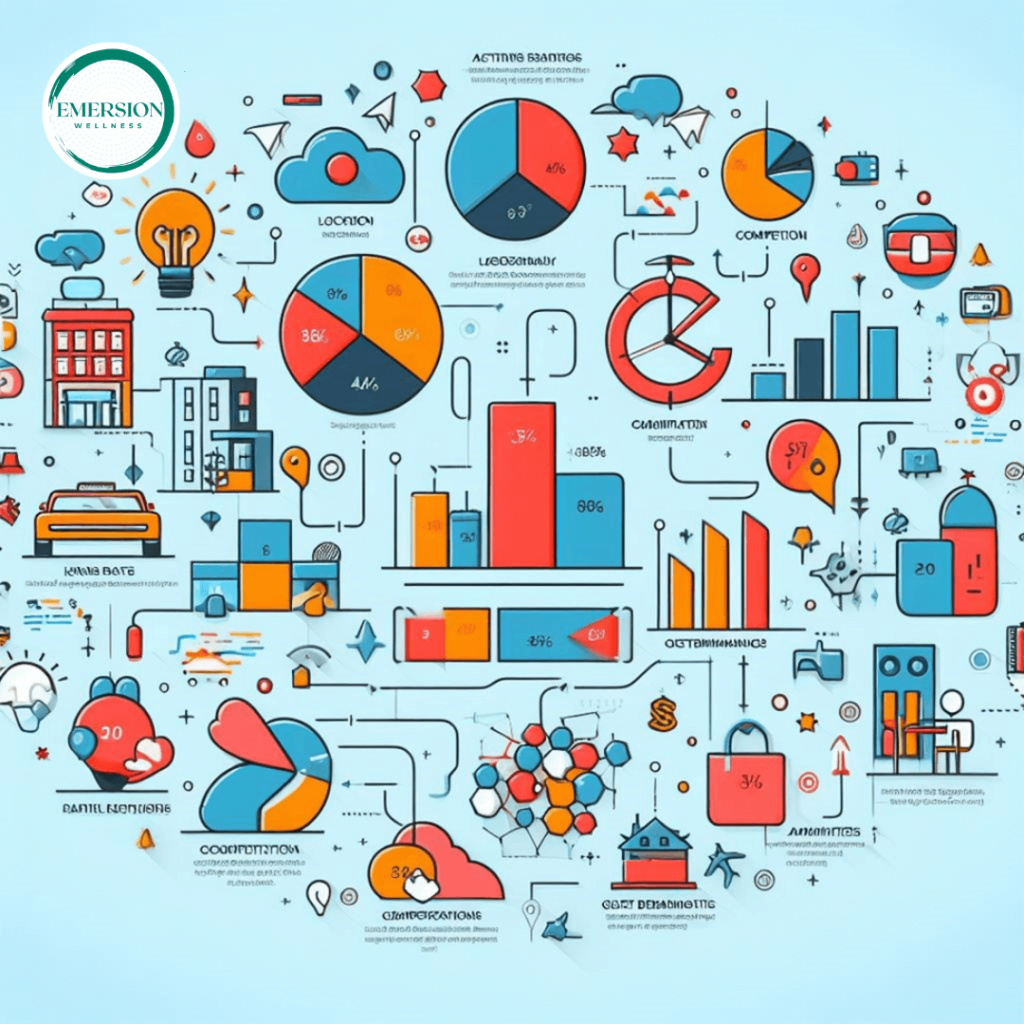For hotel revenue managers, pricing is the number one lever to drive occupancy, ADR, and overall RevPAR. Yet today's inflationary pressures create a maze of complexity around hotel pricing strategies. On one hand, guests are more price-sensitive than ever, seeking maximum value. At the same time, hotels must navigate soaring operating expenses and balance rate integrity.
Mastering pricing has never been more crucial for hotels to maximize revenues and compete in today's environment. Advanced pricing tactics beyond across-the-board rate hikes or discounts are required. Segmentation, optimization, and innovation become critical pillars.
This guide will uncover ten powerful hotel pricing strategies explicitly designed for the challenges of 2024 and beyond. From dynamic rate settings to psychological tricks, these proven pricing techniques will help hotels worldwide yield optimal gains in RevPAR and bottom-line performance.
Pricing is an art and science. Here, we reveal the latest pricing palette to outperform the market regardless of economic uncertainty. These strategies will future-proof hotel revenue through pricing precision, market shift adaptability, and creativity.
Table of Contents
1. Dynamic Hotel Pricing Strategies
Dynamic pricing leverages data and algorithms to adjust room rates fluidly based on demand, events, seasons, and competitor pricing. Rather than fixed rates, hotels can nimbly respond to market shifts and capture higher revenues. Tools I recommend are AxisRooms and SkyTouch for unlocking dynamic pricing.
Hotels must invest in data infrastructure, analytics capabilities, and pricing software to implement dynamic pricing. Historical and real-time demand data, special events calendars, and competitor rate parsing enable dynamic rate algorithm optimization. Machine learning models can forecast demand and recommend optimal rates. Dynamic pricing requires deep integration with channel managers and distributors to update rates quickly across all online points of sale. Hotels also need to communicate rate fluidity to consumers to set expectations.
2. Differential Hotel Pricing Strategies
This involves setting varied rates based on room categories, seasons, days of week, length of stay, booking lead time, and other variables. Rates should optimize revenue for each segment. Use flexible rate fences and surface demand patterns through analytics.
Historical demand data, demand forecasting, and competitive benchmarking back an effective differential pricing strategy. Hotels define customer and channel segments with different willingness-to-pay, such as business travelers, groups, seasonal leisure, or OTA bookings. Weekend or holiday demand typically differs from midweek. Suites and premium views command higher rates. Extended stay discounts, advance purchase rates, and last-minute deals appeal to different bookers. The goal is to align rate variability to maximize revenue across segments.
3. Opaque Hotel Pricing Strategies
Opaque distribution through channels like Priceline involves bundling discounted room inventory into packages without revealing the hotel name until booking. This allows for filling excess inventory while avoiding dilution of published rates.
Hotels must cultivate channel relationships with opaque providers and contract discounted room allotments or dynamic rate connectivity to implement opaque pricing. Guests only see general location and quality indicators until booking. The opaque channel markets and bundles the opaque inventory, bringing in incremental business. Hotels should start conservatively with lower-demand dates to test performance before expanding opaque allotments during need periods. With minimum stays or add-ons, opaque pricing attracts guests who may rebook directly.

4. Compression Hotel Pricing Strategies
Compression pricing lets you maximize rates through premium pricing strategies when high demand compresses availability, such as a major convention. Tools like iRates help monitor compression opportunities.
Compression pricing requires tracking key performance indicators - bookings pace, declining availability, daily pickup, and historical demand patterns. When rooms become scarce 21-45 days from peak events, hotels can price rooms higher via auction-style pricing. Machine learning tools identify periods of high compression based on surging search demand. Hotels must message premium rates as exclusive value through marketing for limited-time compression offers. Compression pricing works best for special events, holidays, and seasonal demand surges when room scarcity enables rate maximization.
5. Bundling
Offering value-added packages that bundle rooms with F&B, spa, recreation, or other services encourages booking upgrades. This also enables monetizing excess capacity.
Savvy bundling first identifies operational areas with excess capacity - such as spas, restaurants, or activities. Hotel marketers can then create packages bundling discounted add-ons to incentivize room bookings. Packages focused on shoulder dates, extended stays, or lowering cost per night all stimulate incremental demand. Bundling works best when guests perceive discounted components as creating overall added value. Hotels should test bundle packages and price points to optimize attachment rates and revenue impact.
6. Fencing
Rate fences segment customers into categories like leisure, corporate, groups, loyalty tiers, or channel-direct bookings. Fencing helps capture willingness-to-pay for each segment and steer bookings for optimal revenue.
Smart fencing requires understanding each customer group's demand drivers, price sensitivity, and booking behaviors. Corporate rates remain consistent, while leisure rates fluctuate. Loyalty member rates, opaque rates, and online travel agency rates are divided. Hotels then design rate codes, restrictions, and marketing offers to target each segment's optimal booking channel or rate code. This enables price discrimination by segment and demand level. Fences boost conversion for each discrete element.
7. Price Anchoring
This establishes a high "anchor" rate that frames a lower discounted or promotional rate as more favorable, stimulating bookings. The contrast effect cognitive bias kicks in.
Anchoring first displays a higher "crossed-out" rate that anchors perception, then reveals a lower rate to contrast against it. This makes the lower rate seem discounted. Online travel agencies often anchor rates higher before showing lower rates with messaging like "Save 15%". A special promotion can anchor against a higher rate during high demand. Anchoring taps into framing effects and shifts reference points. The anchored rate must seem reasonable enough to make the lower rate appealing.
8. Geo-Targeted Hotel Pricing Strategies
Geo-fences enable proximity-based offers to target nearby potential guests via SMS, apps, or email. Location-based promotions can incentivize impulse bookings and stays.
Geo-targeted pricing requires user opt-in and mobile app location tracking to identify nearby potential guests. Guests within a set radius of the hotel can be sent limited-time percent-off coupons or room rate deals via push notification. This sparks impulse stays and walk-ins. Similarly, hotels can geo-target past guests in the area to encourage return visits. Personalized location-based deals generate excitement and a sense of exclusivity. Geo-targeting works for last-minute demand stimulation or weekend impulse getaways.

9. Psychological Hotel Pricing Strategies
Ending rates in .99 or .95 digits signals value. Odd numbers feel like temporary deals. This strategy can make rates more attractive than rounded numbers.
Research shows that odd-ending numbers feel like marked-down prices rather than permanent rates. The leftmost digit conveys the base price, while the decimals represent the deal. $199 feels lower than $200. This perception stems from the retail practice of using .99 to signal sales. Hotels can apply odd-ending rates strategically for promotions. However, whole number rates feel simpler for everyday pricing. Ending corporate rates in .00 has authority.
10. Variable Reward Hotel Pricing Strategies
Sometimes varying rates unexpectedly, like flash sales or surprise discounts, increase anticipation and urgency to book. This taps into variable reward response.
Flashing unadvertised sales for 24 hours sparks excitement and fear of missing out. Members-only last-minute deals reward loyalty, like App-exclusive rates 48 hours out. Similarly, surprise post-stay discounts or reward gifts delight guests. The novelty and variability make the value feel special. This pricing strategy works with already discounted inventory to spur incremental demand through variability and uncertainty - guests won't know what deal they may get.
The art of hotel pricing is blending strategies to optimize revenues. Monitor performance and double down on tactics that deliver results. With the proper foundation, hotels can thrive amidst economic uncertainty. Pricing powerfully steers profitability.
Schedule a free consultation through our website today to discuss how Emersion Wellness can help refine your hotel's pricing strategy and triple RevPAR gains in 2024. Our team of hospitality pricing experts can't wait to partner with you.
Frequently Asked Questions
What is dynamic hotel pricing?
Dynamic pricing uses algorithms and demand data to adjust rates fluidly based on changing market conditions, events, seasons, and competitor prices rather than fixed rates. This maximizes revenues.
How can bundling increase hotel bookings?
Bundling packages that include discounted add-ons like spa or F&B incentivizes room upgrades. Bundling also monetizes excess capacity in amenities.
What are the benefits of differential hotel pricing?
This prices rooms differently based on demand variables like dates, room types, booking lead times, etc. Rates are optimized for each segment, maximizing revenue.
How does opaque pricing help hotels?
Opaque distribution through third parties sells discounted room inventory bundled into packages without revealing the hotel name until booking. This fills excess rooms while protecting rate integrity.
What is compression pricing for hotels?
When high demand compresses room availability, such as for a convention, compression pricing lets hotels charge premium rates, capturing peak revenue opportunities.
How does geo-targeted hotel pricing work?
Geo-targeted offers communicate discounts, deals, and promotions via email or SMS when potential guests are near a property based on location data. This can spur bookings.
What is psychological pricing?
Psychological pricing sets rates ending in .99 or .95 rather than rounded numbers. Odd endings feel more like deals. This strategy makes rates feel lower than they are.
What are the benefits of hotel rate fences?
Rate fences segment customers into groups like corporate, leisure, and loyalty tiers. Hotels can then optimize pricing strategies and steer customer groups toward the most profitable rates and booking channels.
What is price anchoring for hotels?
Price anchoring establishes a high "anchor" rate, making a lower promotional rate seem more attractive due to the contrast effect. This frames discounted rates as favorable deals.
How can variable reward pricing help hotels?
Varying rates unexpectedly via flash sales and surprise discounts taps into variable reward response. This creates excitement, urgency, and incentive to book offers before disappearing.
Contact us for more information
Also read: 10 Easy Tips for Hotel Revenue Managers to Cope With Rate Parity Issues For 2023

I'm Nathan Baws, a nutrition nerd, exercise and weight loss expert, and an unwavering advocate for good health. As the founder of Emersion Wellness, I'm passionate about crafting Seamless Weight Loss Programs to supercharge hotel revenue and transform lives. We've pioneered the World's First Plug & Play Weight Loss Programs for top hotels and resorts, sparking a wellness revolution. Beyond my professional journey, you'll often find me hiking, swimming, and riding the waves, embracing every moment in nature. Join me on this exhilarating journey towards diet, health and wellness.

